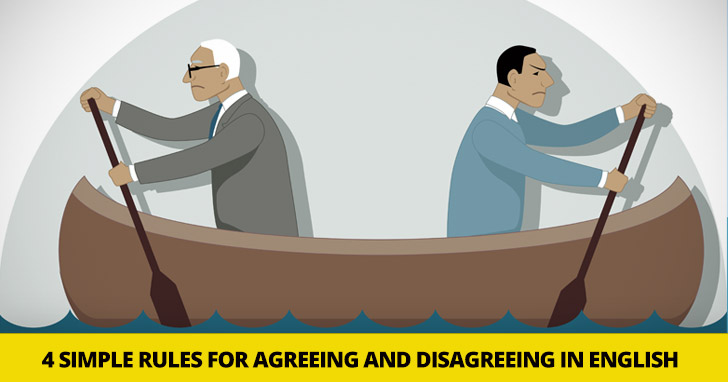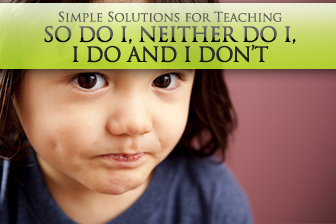So Do I, Neither Do You: 4 Simple Rules for Agreeing and Disagreeing in English


Whatever the reason, agreeing and disagreeing with another person is something that every language learner should be able to do. English has four simple statements that language learners can easily put to use when agreeing and disagreeing: so do I, neither do I, I don’t and I do.

Two phrases are used to agree with a speaker in English: so do I and neither do I. The former is used to agree with a positive statement. The latter is used to agree with a negative statement.
| I have a dog. | So do I. |
| I don’t have a cat. | Neither do I. |
Like with agreement, English speakers use two basic phrases to disagree with another person’s statement: I don’t and I do. The former is used to disagree with a positive statement. The latter is used to disagree with a negative statement.
| I have a cat. | I don’t. |
| I don’t have a dog. | I do. |
Here are some simple games you can play with your ESL students to practice agreeing and disagreeing.
Brainstorm a list of foods with your class. They should range from the simple to the exotic. Then make up a set of cards for your students with one food on each or have your students make their own cards. You should have enough sets for every four or five students in your class. To play this agreement and disagreement game, divide your class into groups and have each group put their cards face down in the middle of the group. One person draws a card and makes a positive or negative statement about that food. For example, “I like pistachios” or “I don’t like grapes”. The person sitting to the right of that person must make a statement either agreeing or disagreeing with the speaker. If that person makes a correct and grammatical statement, she gets the card. She then pulls a new card and makes a statement for the person to her right. If she makes an incorrect statement, the card goes back into the center of the circle before she picks a new card and makes a statement for the person on her right. Play continues until all the cards are claimed. The person with the most cards at the end of the game wins.
Give your students a list of topics for debate. You should include simple topics as well as ones that are more controversial. If you like, use this list. Then divide your students into pairs and give each pair a standard die. For each round of play, one person makes a statement about one of the topics. Her partner then rolls the die. If he rolls an odd number, he must disagree with his partner. If he rolls an even number, he must agree with her. Encourage your students to spend a few minutes discussing each topic. Students should feel free to be creative during their discussions since they may or may not be arguing their actual position on a given subject.
Play this simple game with your class to practice agreeing and disagreeing. Provide students with several cards that have the phrases used to agree or disagree: so do I, neither do I, I don’t, I do. You may want to provide three of each to each pair of students. Have students shuffle cards and divide between them, each student keeping their hand private. Each student then takes a turn making a statement. Her partner must either agree or disagree starting with the phrase on one of his cards and then completing the sentence. If a student does not have the correct phrase on his card for a truthful answer, he must pass. The next student then makes a statement. Students should try to compose their statements so that their partner will not be able to use her cards. However, all statements and responses must be true. The first student to play of all her cards wins.
Once your students have mastered the simple phrases for agreement and disagreement, take their language learning to the next level. You can find an extensive list of agreement and disagreement phrases here. Have students read the items on the list and decide how strong the agreement or disagreement is in each phrase. Have students discuss which phrases would be most appropriate for agreeing or disagreeing with an employer, a friend, a spouse or a parent. Which would they be most likely to use? Are there any they would never use?
Some students may need extra encouragement when it comes time to disagree since it may be rude in their native cultures. Students who will use English in a business or academic setting, however, would do well to practice this type of discussion in their ESL programs before having those types of conversations in the real world.
Are your students comfortable disagreeing with one another? What do you do to encourage honest expression in your classroom?